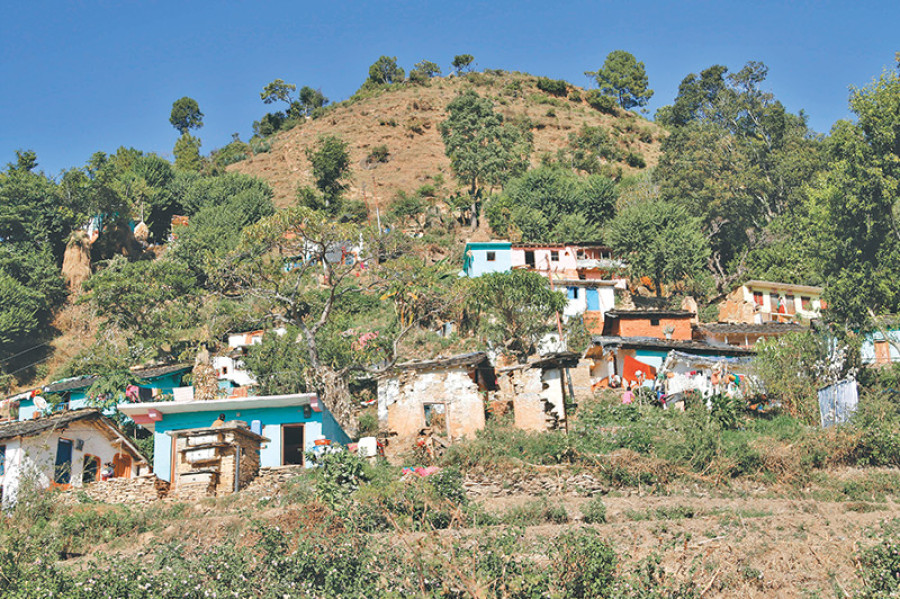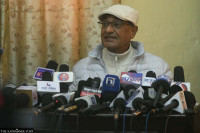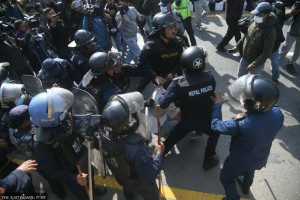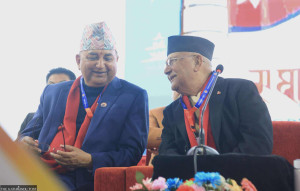National
Dalits hold the key
Dalits are likely to tip the ballance when Baitadi goes to the federal and provincial assembly polls, with one in eight Baitadi residents coming from the excluded community.
Kamal Dev Bhattarai
Dalits are likely to tip the ballance when Baitadi goes to the federal and provincial assembly polls, with one in eight Baitadi residents coming from the excluded community.
According to the Central Bureau of Statistics, Dalits constitute 13 percent of the total population of the district, after the Chhetris and Brahmins who account for 56 percent and 22 percent, respectively.
The district sees a cut-throat competition between the candidates of the Nepali Congress and the left alliance. Nara Bahadur Chand of the NC, who is also a state minister for commerce, and UML candidate Damodar Bhandari, a former state minister for finance, are in the race for the federal parliament seat.
For the provincial assembly, RPP leader Ganesh Chand is contesting in Baitadi (B) while NC leader Hari Mohan Bhandari is a contender in Baitadi (A). From the left alliance, UML leader Prem Prakash Bhatt is contesting from Baitadi (A) and Maoist leader Liladhar Bhatt has stood in Baitadi (B).

“Past evidence shows that the voting pattern of the Dalit community is unpredictable. There is always a shift among the Dalit voters.
They are not voting for the same party consistently,” said Prithivi Raj Awasthi, chief of the Jaganath Multiple Campus. “It’s easy to change the minds of Dalits rather than other castes and communities,” he added. There are no Dalit candidates in direct election for both the federal parliament and provincial assembly.
Dalit members the Post spoke to said they are still undecided about their preferences. “We will see how candidates offer to address our problems related to housing, unemployment and health and education,” said Puran Ram Bhul, 35. “In the first CA, we voted for the Maoists with the belief that the party would address the problems of Dalits but the promises remained hollow,” he said.
Party candidates do not give up their hope for Dalit votes until the eleventh hour. Candidates often try to woo this vote bank with cash. Gagan Bhul, 60, presented an example of how candidates try to buy votes.
He said Lokendra Bahadur Chand had offered him cash in 2008 but the former prime minister did not work in Dalits’ favour.
“In the first CA election, we received few votes and the Maoists won the support of the Dalit constituency but the trend did not continue in the second CA and the local level elections,” said NC district leader Ramesh Bhandari.
In the 2008 elections, the Maoists swept both the constituencies in the district. In 1991 and 1999 elections, the NC won the seats. In 1993 elections, the NC lost them both. In 2013, the UML had won Constituency-1 while Baitadi-2 went to the NC. There seems to be a fierce competition between the NC and the left alliance this time.
Out of the 10 local federal units in the district, the NC won 3 municipalities and 3 rural municipalities in the recently concluded elections.
The UML had victory in three rural municipalities and the Maoists won one municipality. But combined votes of the UML and the Maoist party exceed those received by the NC by a wide margin.
The NC has made an electoral alliance with the Rastriya Prajatantra Party. This is the home constituency of former PM Chand. In the second CA elections, he lost both the constituencies.
There used to be two constituencies in the district but the number has come down to one this time around.
Migration is high. In 1990, there were three constituencies. In the Far West, connectivity, health and education are major electoral issues.




 13.12°C Kathmandu
13.12°C Kathmandu













%20(1).jpg&w=300&height=200)

